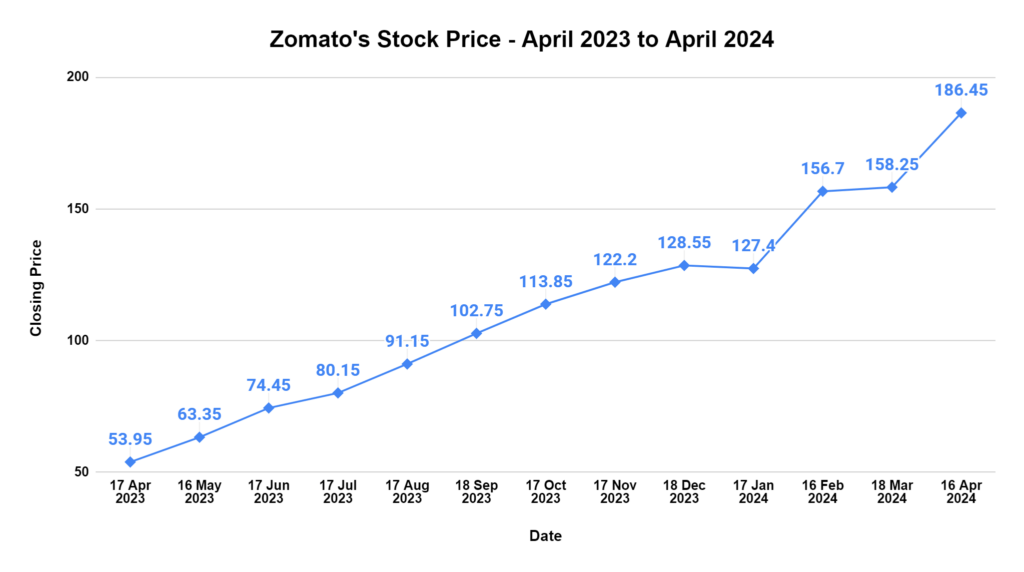Why the Indian Stock Market’s Rapid Rise Might Be Dangerous? Is the Current Bull Run Sustainable or a Setup for a Fall?

‘A report by Kotak Institutional Equities shows that the PE ratio of 104 companies is more than 50 in the stock market. ‘Sanjeev Prasad, the CEO, says that the Indian market has gone insane.’
‘Investors have no idea about the risk they’re taking.’
‘Companies are not investing because of Adani and Ambani.’ ‘But the investors don’t know about it.’
‘In March, SEBI warned that investors should invest in small-cap stocks after careful consideration.’
Is Indian stock market in a bubble?

July 3, 2024, was a historic day for the Indian stock market. Sensex, consisting of 30 major companies in the Bombay Stock Exchange, crossed 80,000 for the first time. In fact, last month, Sensex broke every record. It saw a jump of 70,000 to 75,000 in 80 trading days. And a jump of 75,000 to 80,000 in 58 trading days.
India’s second major benchmark, Nifty 50, consisting of 50 major companies in the National Stock Exchange, has also crossed it’s all-time high. The market is going crazy. That’s why people are becoming millionaires day by day. But there’s one question, especially before the budget, that everyone has in mind.
“Is the stock market overvalued?”
If yes, is there going to be a stock market crash?
“Something is happening in India’s economy that needs to be feared.”
On one hand, financial expert Amit Goel, co-founder of Page 360, an asset management company, says that the Indian market is overvalued. This trend won’t last long. And Indian equities are the biggest bubble in the history of the world equity market.
On the other hand, there’s SEBI’s chief, who says that the markets aren’t overvalued. In fact, it shows the trust of the entire world on India’s growth. So, who is right?
So the main questions are:
Why is the market so high?
Is it overvalued?
If yes, is there going to be a crash?
First, why the stock market has been in a bull run for so long. A major reason is the participation of retail investors in the stock market.
A very fast growth of registered investors have been seen on the National Stock Exchange since COVID.
In July 2010, the number of registered investors was 1 crore. And by April 2024, the number has increased to 9 crore. And because of this spike, these individual investors are now controlling our stock market and not the big foreign companies.
Deepak Shenoy, the founder of a portfolio management service, said that for the first time in 20 years, individual investors and mutual funds control the stock market more than foreign portfolio investors.
And these individual investors are very young
- 40% of them are under 30
- And this trend will continue
Every month, new people from Maharashtra and Uttar Pradesh are becoming investors in our market. In 2010, there were only 7 lakh people from Uttar Pradesh who had invested in the National Stock Exchange. This number will reach 1 crore by next year. And because new individual investors are coming into the market, and the market is now in the hands of individual investors, it has led to a bull run in our market.
Now the question is, why are these young investors coming into the market?

There’s a reason behind this. New stock brokerage apps like Zerodha, Angel One, Groww, and Upstox have made it easier for Tier 2 and Tier 3 customers to invest in the stock market. And these people are not coming from cities like Delhi and Mumbai. They’re coming from small cities.
Like in 2023, 80% of Upstox’s customers were from non-metro, non-Tier 1 cities. The government has also made some changes which has made it easier to invest in the stock market.
For example, in 2015, the government changed the rules so that retirement funds like money from the National Pension System could be invested in the stock market. With this, many retirees’ money is now in the stock market and the bull run is on. Good investment is one way to increase long-term wealth.
Apart from local individual investors, foreign investors are also very positive about the Indian stock market. For example, in the past two months, foreign investors have bought Indian stocks worth $5 billion.
In fact, in MSCI, which is Morgan Stanley’s stock index for emerging markets, the Indian stock market’s contribution was only 8% in 2020, now, it’s 18%.
Morgan Stanley’s strategist, Ridham Desai, said that India is gaining more power in the world which is a huge opportunity for investors. This excitement between Indian and foreign investors is why Sensex has crossed 80,000. In fact, the stock market is doing so well that many businessmen are now thinking that instead of investing in business, they should invest in the stock market.
Saurabh Mukherjee, the founder of an investment company, said that many entrepreneurs are coming to him who want to do this. And Saurabh says that this is a logical decision for many people.
For example, if a businessman invests Rs 50 lakh in his business, he has to work hard to earn profits. After which he has to pay a corporate tax of 25%. But if he’s investing this money in the stock market, which is in a bull market, he has to pay a long-term capital tax of 10% on his profits.
Isn’t it strange that the stock market is doing so well that people are investing in the stock market instead of their businesses?
This is why many people are asking the question:
Is the stock market in a bubble?
“How long has the Indian stock market been in a bubble?”
“Nobody in the last 4 years has seen a serious correction.”
“It’s something to think about.”

To check whether a stock market is in a bubble or not, research is needed on many companies in the stock market. One way to check this is to compare the price of a company’s stock with how much money the company is earning.
To check this, many investors look at the P.E. Ratio. Price to Earning Ratio. This is the stock price of a company divided by the company’s income per share. According to the P.E. Ratio, many Indian companies are overvalued. In fact, 2 months ago, the report by Kotak Institutional Equities showed that there are 104 companies in India whose P.E. Ratio is more than 50.
This means that these companies are earning only Rs. 1 per share, but the investors are paying Rs. 50 to buy their stock. Usually, when the P.E. Ratio of a company is around 30, it’s considered reasonable. But now, more than 100 companies have crossed the 50 mark. Kotak has shown that the P.E. Ratio of 9 companies is more than 100. This means that the investors are paying Rs. 100 to buy the stock of the company that is earning Rs. 1.
This is why Kotak has written a full report where they say that this valuation is not sustainable. They say that the number of companies whose P.E. Ratio is more than 50 has increased 10 times in the last 10 years.

Let’s talk about Zomato, whose P.E. Ratio is more than 500. Now, a simple question arises, why investors are buying the stocks of such companies whose P.E. Ratio is more than 500. Kotak says it’s because people want to jump on the bandwagon. They say that as soon as Zomato announced that they’re earning a profit, many investors got excited and started buying their stocks. This increased their share price and P.E. Ratio.
In fact, the CEO of Kotak Institutional Equities gave a big statement. Sanjeev Prasad, the CEO, said that the Indian market is turning a blind eye towards the risks that it could face in the next 2-10 years. Gulzar Natarajan, an ex-IAS officer, also did an analysis which showed that Indian companies are working in a very strange way.
He analysed the data of more than 5000 publicly listed companies. He found that between 2018 and 2022, their net sales increased by more than 50% and net profits by almost 200%. So now these companies are earning a lot of money because of which investors are buying their stock.
But the question is, will these companies earn this much money in the years to come?
Because the money coming to their companies is not being invested to buy new land or to build new factories. So there’s a fear that these companies are earning a lot of money right now but what will happen in the next 2-3 years?
Arvind Subramaniam, who was the Chief Economic Advisor of the government, also wrote in the Indian Express that the companies are earning money, but they fear that when they invest money in factories or in building new things, they will lose in the competition against some companies.
Which companies will they lose against?
Against companies like Adani and Ambani, which the government prefers. So basically, companies fear that Ambani and Adani will get the contracts, so why should they invest?

But if they don’t invest, how will they earn money in the future? And individual investors don’t know about this yet.
Right now, investors are just excited that companies are earning a lot of profit. But they don’t think about what will happen in 5-10 years. And the excitement among investors is limited to only some sectors such as infrastructure, defence, and green energy. Defence companies like Bharat Electronics, Garden Reach Shipping, and Bharat Dynamics have doubled their stock prices in the past 9-12 months. And their P.E. ratios are very high.
In fact, it’s so high that even established companies’ valuations look small compared to these companies. Such as French military aircraft maker Dassault Aviation, and US shipbuilding company Huntington Ingalls, their valuations are much lower than Indian companies. But their business is much bigger than Indian companies. It’s not that American companies don’t have a high P.E. ratio. In fact, NVIDIA’s P.E. ratio is more than 70.
The problem in India is that many companies have a high P.E. ratio which are in the traditional sectors. Such as car companies that run on diesel or petrol. And they don’t have any technological advantage. It’s possible that after 10 years, no petrol car will be sold. So why is their P.E. ratio so high?
Kotak has shown in their report that due to electric vehicles, the value of traditional car companies should decrease in the future. But their valuation and P.E. ratio is high.
So why is that?
Because people are jumping on the bandwagon. That’s why Kotak’s CEO said that he thinks the market has turned a blind eye and many risks are visible to everyone but the market is ignoring this risk.
A similar trend took place 25 years back when a dot-com bubble emerged in America. Investors were crazy about every company whose name ended with a dot-com. Because of this trend, many individual investors started buying stock of internet companies even if their revenue wasn’t that high.
Obviously, a bubble formed. And this bubble burst one day. Because of which many investors suffered a huge loss.
Apart from P.E. ratio, many people use another indicator to see the valuation of the stock market. It’s called the Warren Buffet Indicator. It was created by Warren Buffet, one of the most successful investors in the world. This indicator measures the ratio of the total market capitalization or the value of the stock market to the country’s GDP.
This value is compared to the historical average. Currently, the Warren Buffet Indicator for India’s stock market is 1.02. And the historical average of 10 years is 0.91. This means that the Warren Buffett Indicator is higher than the historical average. This means that the Indian stock market is overvalued.
But many people aren’t bothered by such things.
For example, Mark Mobius, a fund manager, says that the high P.E. ratio only tells a part of the story. He says that India’s economy is a growing economy. And many sectors will perform well. So the high P.E. ratio of the stocks is justified. Investors don’t need to worry.
Morgan Stanley’s chief strategist, Ridham Desai, says that India’s bull market will continue. Liquidity is good in the market. And people’s trust in the market is strong.
So why should you worry?
There’s a problem here. People who have invested in big companies, like Reliance or Tata, don’t need to worry. But people who have invested in small companies, like small cap companies, need to worry. For example, Amit Goel, says that investment in the small companies have surpassed all expectations.
Devina Mehra, the MD of First Global, says that the market is not in a bubble. But many small-cap stocks are overvalued. In March, SEBI warned that small-cap stocks should be invested in after careful consideration. Publicly traded companies can be divided into different categories. They can be divided according to their valuation or market capitalization.
- Large-cap companies are the top 100 companies with a market cap of more than Rs 20,000 crores. They’re also called blue chip stocks, like Reliance or Tata.
- Mid-cap companies have a market cap of Rs 5,000-20,000 crores.
- And small-cap companies have a market cap of less than Rs 5,000 crores.
Devina Mehra says that investors should reduce their exposure to small-cap companies. These are the companies whose valuation is less than Rs 5,000 crores. Devina says that small-cap companies’ stocks don’t rise and fall with Nifty. Their trends are different.
So, it’s difficult to predict how their stock will rise. They rise and fall at an exponential rate. So it’s difficult to recover from these stocks.
For example, in 2008, when there was a global financial crisis, the small-cap index fell by 78%. And it didn’t recover for 8 years. Some people say that they’ve made a lot of money by investing in small caps.
For example, in the past 10 years, the average annual return on small cap mutual funds is 22%. While the return on large-cap funds is only 14%. But remember that these stocks are volatile too. They might rise this year and fall the next.
How many retail investors can handle this volatility?

People invest pretty emotionally. They invest a lot of money in well-performing small-cap stocks. But when they fall next year, their portfolio falls too. So it’s better to decide how much of your portfolio’s contribution will go to small cap. And whether the market goes up or down, you should keep that contribution fixed.
SEBI itself stated that investors should reduce their exposure to small caps. So, there are two risks of a bubble in the stock market.
- First, many companies have a high PE ratio.
- And second, small caps can be dangerous for retail investors.
- The third risk is the budget.
Christopher Wood, the global head of equity strategy at Jefferies, said that the Indian stock market can be badly affected by the union budget. The stock market and the budget have been in a close relationship for a long time. If the budget is positive for the economy, the stock market will do well. If it’s negative, the stock market will fall.
Many people will predict what will happen in the stock market after the budget. But in the long term, these movements don’t matter. In fact, in 2020, Morgan Stanley announced that the impact of the budget doesn’t matter in the market anymore.
In 2004, the UPA government abolished the long-term capital gains tax from the share market. This means that you’ll have to pay less tax if you invest in the stock market for more than a year. This should be a good thing for the stock market. But the index fell after the announcement of the budget.

So the market is unpredictable. If someone tells you that they know exactly what will happen in the market, they’re fooling you. But some people say that the budget can have a long term impact on the stock market if new taxes are introduced.
For example, Christopher Wood said that if a new capital gains tax is introduced, the stock market can react negatively. He said that the government has been thinking for a long time to increase the capital gains tax. Earlier it was mentioned that the corporate tax rate is 25% and the long-term capital gains tax is 10%. Because of this, many entrepreneurs are investing in the stock market instead of their businesses.
So it’s possible that the government will try to reduce this difference so that at least entrepreneurs will be motivated to invest in their businesses. He said that the government believes that increasing the capital gains tax will reduce speculative gambling-like trading. This will help people make good long-term investments. This can lead to a correction in the stock market.
Correction doesn’t mean a crash.
Correction happens for a short period of time. But a crash has a huge impact on the stock market. Many people believe that there will be a correction in the market. Either because many companies have a P.E. ration of more than 50 or because the government can increase the capital gains tax.
Whether there will be a crash or not depends on the theory an investor believes in.
So do people believe that the P.E. ratio of these companies is so high because in the future, these companies will have a huge income?
Investors are aware of this.
Or do people believe that the investors are investing blindly in the stock market
and many companies won’t have a good income in the future?
People like Rajat Sharma say that you don’t have to worry. He is the CEO of Sana Securities. He says that even if there is a correction or a crash in the market, India is a bright spot, and a crash or a correction won’t last long. You have to decide whether, in case of a correction or a crash, which situation should your portfolio be in?
The best advice is to invest in things that you have knowledge about. Don’t try to follow the crowd.




